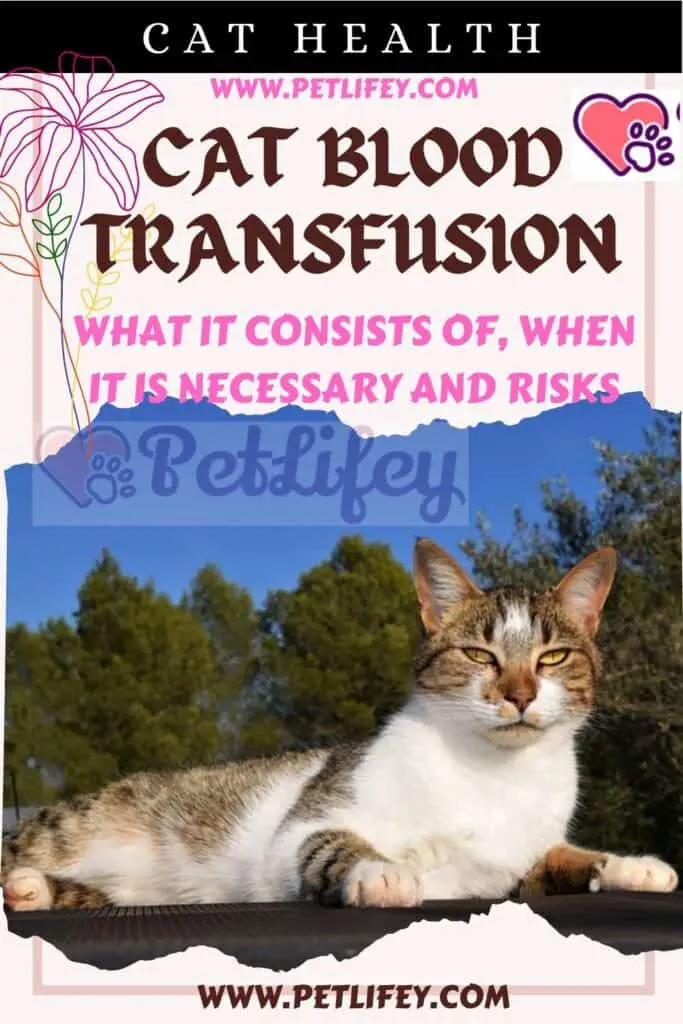More and more frequent and necessary: what does it mean to give a blood transfusion to a cat and what are the benefits and risks associated with this operation.

When is a cat blood transfusion necessary and what are the associated risks? It is inevitable to ask these questions when the vet tells us that the only way to save the life of our beloved cat is to have him undergo this operation. But what do you need to know well before ‘giving’ blood? Surely you have to know the donor, not just the recipient: everything there is to know in this circumstance.
When transfusion is needed
A fundamental premise is that it is now a very widespread practice in veterinary surgeries, also because the benefits are so many. It is therefore a necessary operation in case of cat anemia, whose symptoms are evident and in progress.
There are various forms of anemia, but blood transfusion is appropriate only in the most severe cases or acute bleeding. However, when it comes to chronic anemia and low hematocrit values it is not necessary to resort to this blood donation.
In fact, an anemia that the cat usually suffers from does not make it exposed to serious dangers, as it is as if the feline’s body gets used to this ‘scarce’ amount of blood. But if you have significant blood loss, you need to have more blood injected to make up for what isn’t there.
Cat blood transfusion: feline blood groups
It is not possible to think about carrying out a transfusion without knowing well the blood group of the feline that will receive it and that of the donor. Cats have natural isoantibodies, which are antibodies preformed with other blood groups, which are of three types:
- group A,
- group B,
- AB group.
The first blood group is the most common among felines and affects most breeds, such as the European cat and the Maine Coon. This group of cats can only receive other type A blood.
Group B, on the other hand, affects breeds such as the Burmese, the Devon Rex , the British Shorthair , the Abyssinian and others. Also in this case the felines with group B can only receive blood from donors with the same group.
Finally, in the ‘mixed’ group AB, which unfortunately is not very frequent (but common in the Ragdoll ), felines can receive transfusion blood of both blood groups A and B.
Cat transfusion: what to know about donors
But what should blood donors be like and what are the difficulties that could be encountered before and during the collection of blood to be donated? The state of health of the donor will have to be evaluated under the microscope, just to avoid some future problems in the recipient.
The main requirements of a donor should be:
- a young age (between 2 and 8 years),
- good blood tests,
- do not carry FIV or FeLV,
- healthy,
- without heart problems.
Obviously, before the collection, it will be necessary to understand which type of blood group the donor belongs to. And it is precisely at the time of collection that difficulties could arise, because it is unlikely that the cat will allow blood to be drawn with a needle, so it may be necessary to sedate it. You may also find that you may be drawing too little blood.
Benefits and Risks of Transfusion

Undoubtedly there are advantages, namely that of making up for the amount of blood lost or insufficient after an episode of acute anemia or haemorrhage. So if it is necessary to do it, it is because the life of the feline depends on it. Unfortunately, however, it is useless to hide it, there are also risks.
In particular, we are talking about massive antibody hemolysis, a process of destruction of red blood cells, which has the following direct consequences:
- a state of apathy,
- breathing problems,
- heart problems,
- episodes of vomiting and diarrhea,
- seizures and shock,
- death.
Finally, the risks also include some allergic reactions, which have effects on the skin: itching, erythema, urticaria etc. In any case, it is necessary to inquire well with your trusted veterinarian to dispel any doubts and understand how risks can be avoided.






